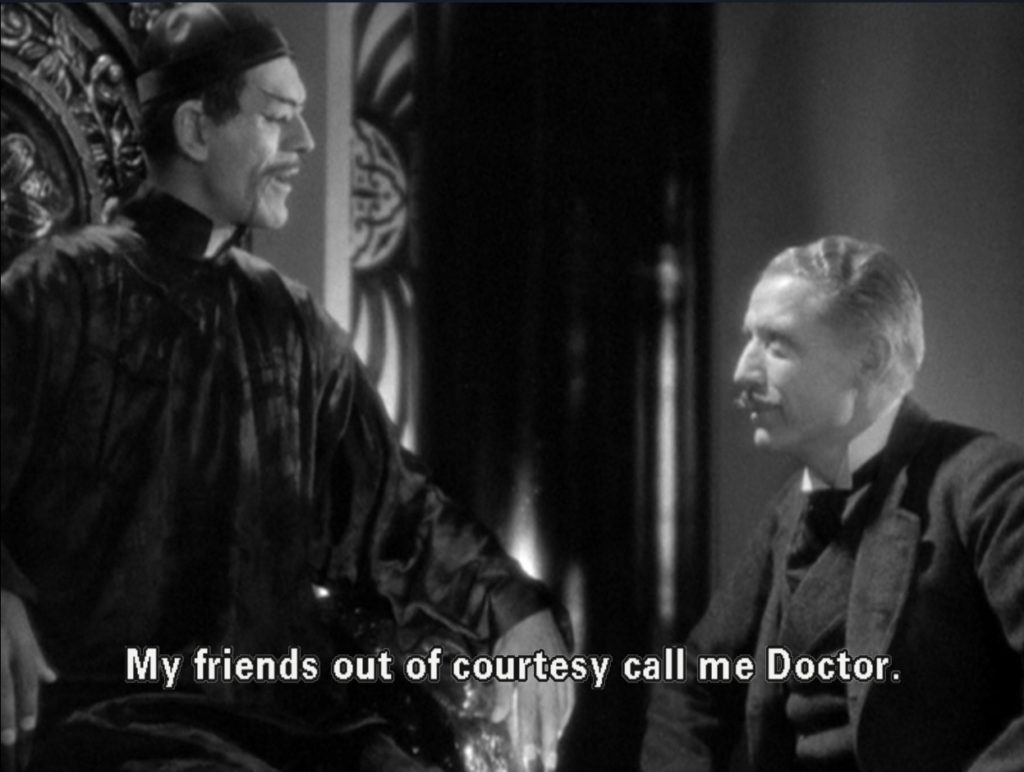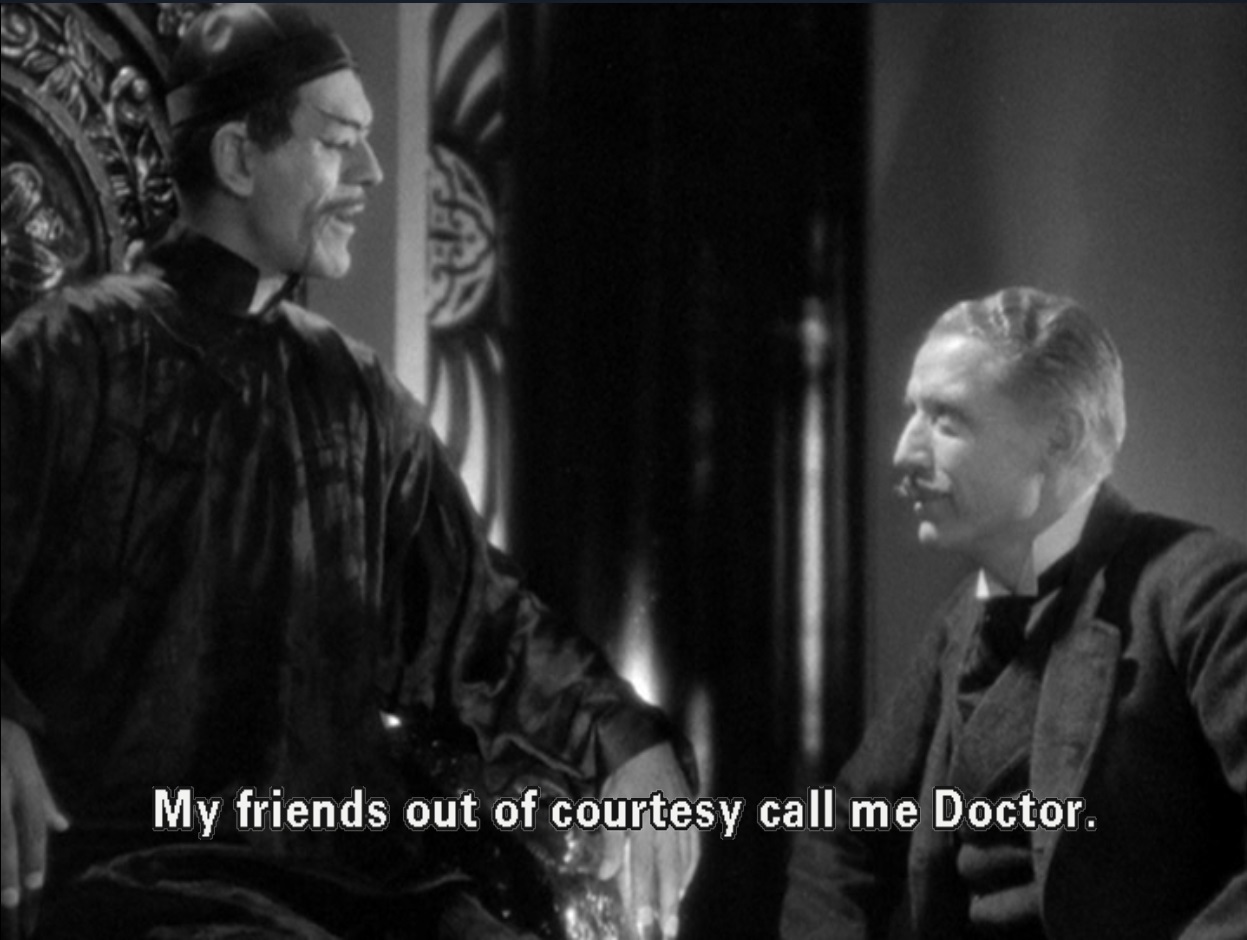Movie Review: The Mask of Fu Manchu (1932) directed by Charles Brabin
Once again, representatives of the British Museum, led by Sir Lionel Barton (Lawrence Grant), plan to rob a tomb and steal another country’s treasures. Now ordinarily that would make them seem like bad guys. But as Nayland Smith (Lewis Stone) explains, in London, shorn of their cultural context, the golden mask and sword of Genghis Khan would merely be pretty trinkets for tourists to stare at. But if Fu Manchu (Boris Karloff) gets hold of the golden regalia first, he’ll be able to use it to unite all of Asia under his banner and conquer the world. So this sacrilege and robbery is morally justified.

Sir Lionel has been a little loose-lipped about the fact that he’s discovered the exact location of Genghis Khan’s tomb. Naturally he is immediately abducted by Fu Manchu’s minions (disguised as mummies!) Fortunately, Sheila Barton (Karen Morley), the scholar’s daughter, also knows the location. She and her fiancé Terrence Granville (Charles Starrett) join the British expedition.
At Fu Manchu’s secret lair near the Gobi Desert, he attempts to extract the location of the tomb from Sir Lionel, with the help of his lovely but evil daughter Fah Lo See (Myrna Loy). Even the insidious bell torture fails to break the Englishman’s will, so the Devil Doctor is forced to his backup plan of extorting the regalia from the British expedition once they’ve succeeded in looting the tomb.
This MGM film is billed as horror, but modern viewers are likely to find it’s barely in the genre as it’s now understood. There are some scary bits, and torture, but it really seems more of an adventure film.
Good: This movie had a full budget, and the set design and special effects are excellent. Boris Karloff and Myrna Loy are clearly having the time of their lives with the juicy villain roles, and the supporting cast is also good even if they have less fun roles. The torture devices are suitably grotesque, and the creation of the mind control serum is a classic scene which does become horrific. The production codes about sex and violence were just tightening up, so Fah Lo See’s sadistic tendencies are all but stated.
Less Good: Fu Manchu, as I’ve discussed before, came out of the “yellow peril” school of literature, and there’s quite a bit of racism in this movie, both by the “heroes” and from Fu Manchu. (The only black people in his organization are slaves.) The Devil Doctor is touchy about being respectfully addressed by Westerners, as he earned his three doctorates. The practice of “yellowface”, having white actors play important Asian roles, was in full effect–the only Asian actor with a speaking part is Willie Fung in an uncredited comic relief bit.
And of course there was zero effort made in researching Chinese, Mongolian or other Asian cultures, which means that Fu Manchu’s plan to use the golden regalia of Genghis Khan to unite Asia is gobbledygook. Famously, the robes Fu Manchu wears for the climax are in fact a woman’s wedding dress! (Although one could take the alternative interpretation that the Devil Doctor just wanted to feel pretty for his big day and no one calls him out on it because we all know what happens to people who sass Fu Manchu.)
Content note: Torture, mutilation, neither Fu Manchu nor Fah Lo See are big on consent in relationships, some folks might have issues with the spiders and snakes, racism, cultural sexism.
Fah Lo See just kind of vanishes before the climax, so she may have survived, but no sequel appeared.
Back in its first run, the film was often censored for sex and violence, and in later years for the worst of the racist dialogue. Most copies in circulation are these cut ones; see if you can get the Hollywood Legends of Horror edition which is uncut.
Overall: A fun movie with some seriously ugly racism in it. If you can handle that in the context of its genre and time period, well worth seeing.

